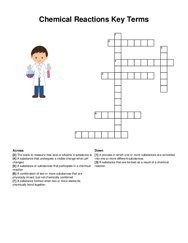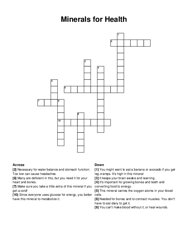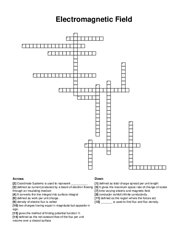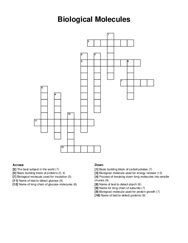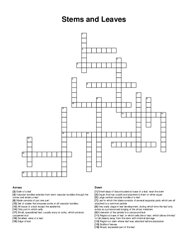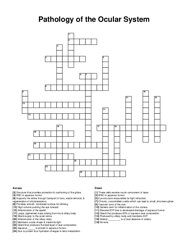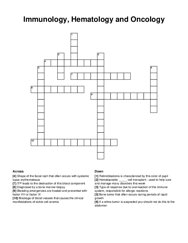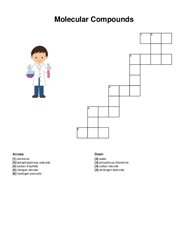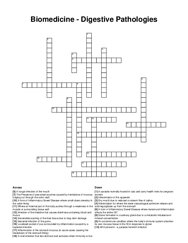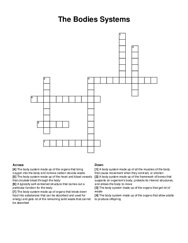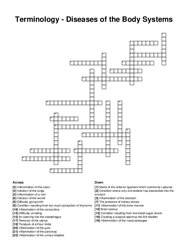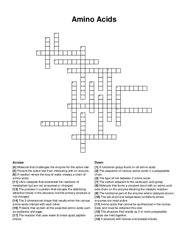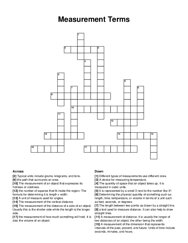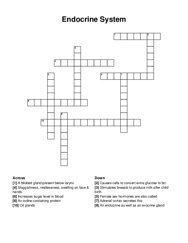Categories
- Agriculture / Farm
- Animals
- Arts / Crafts
- Beauty / Fashion
- Books / Literature
- Business / Finance
- Cities / Places
- Computers / IT
- Ecology / Climate
- Electronics
- Energy / Utilities
- Food / Drinks
- General
- Geography
- Geology
- Health / Fitness
- History
- Home / Garden
- Jobs / Education
- Kids / School
- Law / Government
- Music / Movies / TV
- News / Media
- Occasions
- Christmas
- Easter
- Halloween
- New Year
- Saint Patrick's Day
- Thanksgiving
- Valentine's Day
- Outdoors
- Religion / Belief
- Safety / Prevention
- Science
- Astronomy
- Biology
- Chemistry
- Physics
- Seasonal
- Society / Culture
- Sports
- Tools / Equipment
- Travel / Tourism
- Vehicles
Science Crossword Puzzles
Free printable science crossword puzzles. Download pre-made or create your own Crossword using our crossword maker. Simply download, print and start playing or play online.
a substance formed when two or more elements chemically bond together, the scale to measure how acid or alkaline a substance is, a process in which …
_ is the type of matter that makes up the object, is the ability to burn _ , an element/mineral _ , is the ability of two or more substances to …
necessary for water balance and stomach function. too low can cause headaches, it's important for growing bones and teeth and converting food to …
layer of skin between the epidermis and subcutaneous tissue, occurs when hair follicles become clogged with oil and dead skin cells, caused by uv, …
used in moth balls, polish remover, paint remover, compounds that contains carbon, present in alcoholic drinks(beer, wine), disinfectant, perfumes, …
time varying electric and magnetic field, coordinate systems is used to represent _ , defined as the net outward flow of the flux per unit volume over …
biological molecule used for protein growth (7), biological molecule used for energy release (12), biological molecule used for insulation (5), basic …
the iss travels 5 miles in one _ , most iss visitors are from this country, the iss was launched from earth into space in _ , skydiving off the iss, …
clusters of lymph nodes in the oral cavity, butterfly-shaped gland located behind the sternum, lymphatic organ that filters blood, lymphatic vessels …
region on stem where leaf was attached before abscission, very early stage in leaf development, during which time the leaf only exists as a pronounced …
a mutated gene that stimulates uncontrollable cell division, a region of dna where rna polymerase binds, how cells control gene activity without …
high volume pushing the eye forward, inflammation of the eyelid, structure that provides protection & cushioning of the globe, these cells secrete …
understanding the way matter is composed and behaves, parts working together to perform a function, limits of a system, observation using data and …
bone tumor that often occurs during periods of rapid growth, diagnosed by a bone marrow biopsy, retinoblastoma is characterized by this color of …
tiny organelles that link amino acids together form proteins, carries out photosynthesis that stores energy from sunlight as chemical energy for the …
water, carbon dioxide, ammonia, phosphorus tribromine, carbon monoxide, nitrogen dioxide, tetraphosphrous octoxide, hydrogen peroxide, carbon …
cells that manufacture and store the protein keratin, the outermost layer of the skin, the protein that provides skin, hair, and nails with strength …
a fungal infection of the mouth, a viral infection that lies dormant and activates when immunity is low, localised pocket of pus surrounded by …
a typically self-contained structure that carries out a particular function for the body, the body system made up of organs that break down food into …
inflammation of the stomach, an opening into the oesophagus, inflammation of the nasal passages, inflammation of the colon, condition resulting from …
four large, paired muscles that cover the front of the rib cage and serve to draw the forelimbs toward the chest, controls your body's …
contraction of heart muscle cells, ability of the heart to receive and transmit an impulse, contraction phase of the cardiac cycle, heart muscle cells …
the less numerous type of sweat gland; produces a secretion containing water, salts, proteins, and fatty acids, dense irregular connective tissues …
amino acids that cannot be synthesized in the human body and must be obtained thru diet, the structure that results as 2 or more polypeptide pieces …
typical units include grams, kilograms, and tons, the path that surrounds an area, the measurement of the distance of a side of an object. usually …
the temperature at which liquid turns to a solid, the temperature at which a liquid boils and turns to vapour, breakability or flexibility, shininess …
a specific characteristic of an individual organism, instruction for making a protein molecule, a random change in a gene that sometimes results in a …
how many missions did the apollo program consist of?, the agency responsible for the apollo program and other space missions in the u.s, the telescope …
a unit of heat equivalent to 100,000 btu, a form of energy resulting from the flow of electric charge, the energy that is generated and measured …
an iodine-containing protein, causes cells to convert extra glucose to fat, a bilobed gland present below larynx, adrenal cortex secretes this, …
